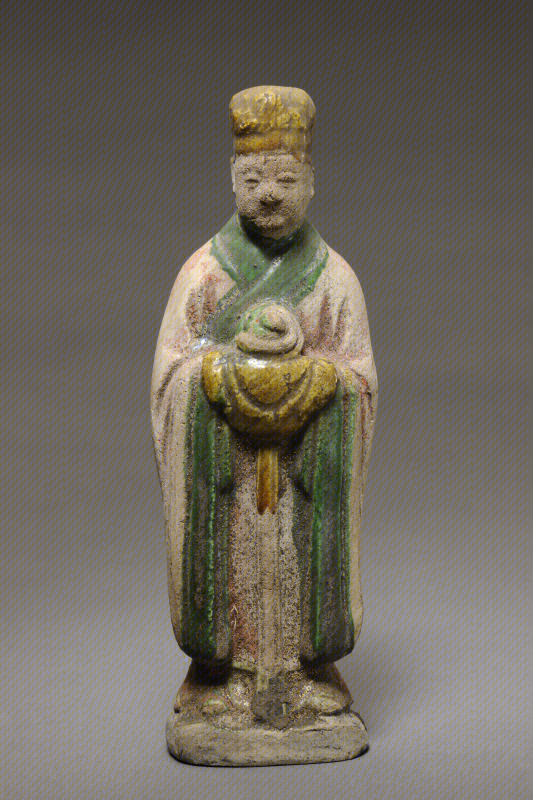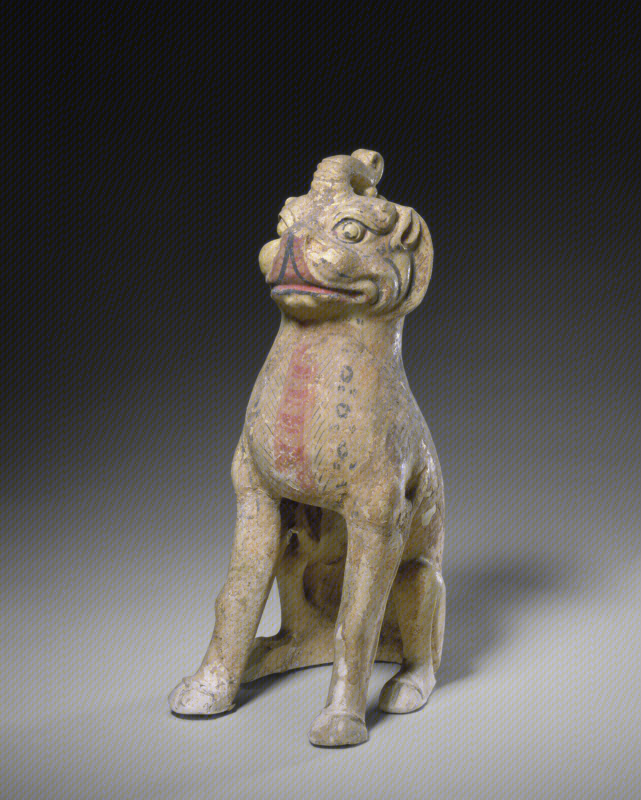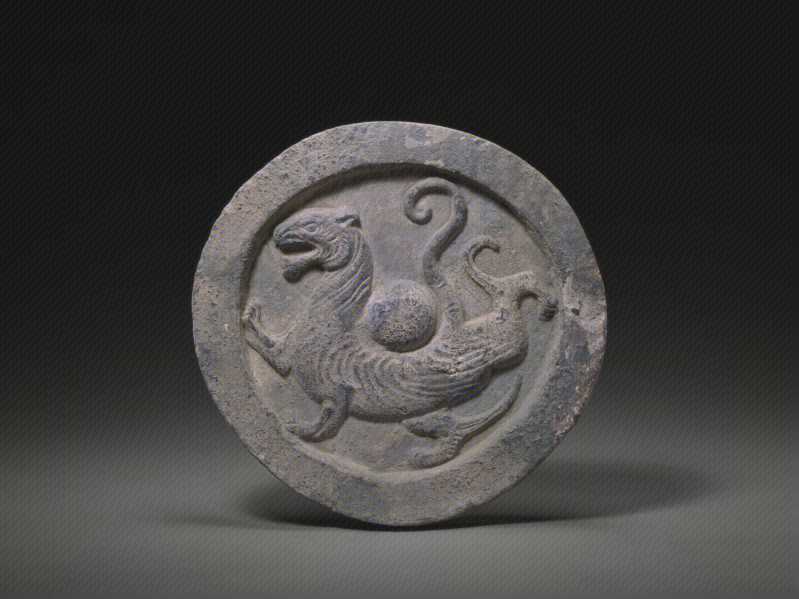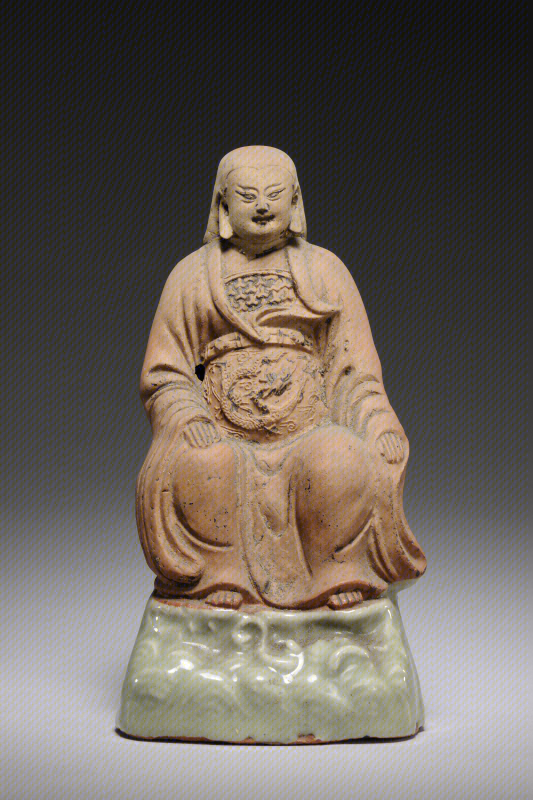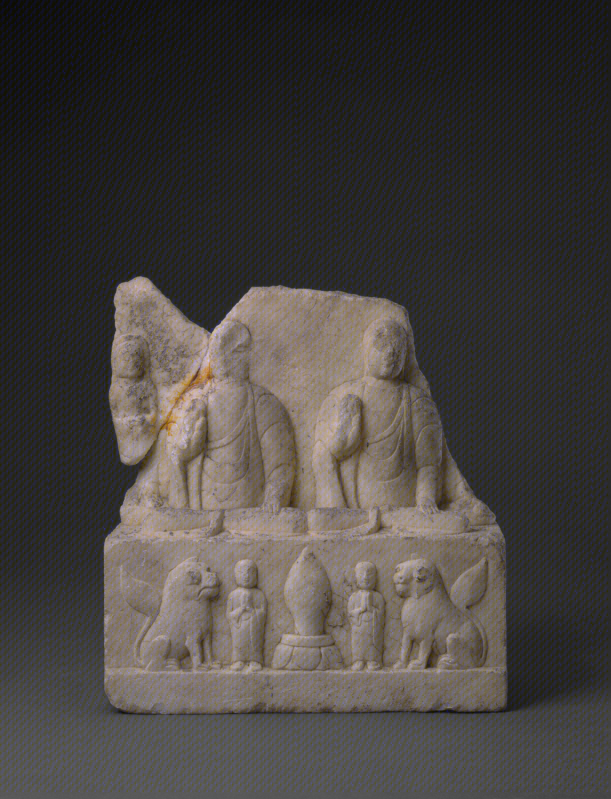
Stone Double-Buddha Votive Image Offered by Huo Hei
Period: Heqing reign (562–565), Northern Qi dynasty (550–577)
Date: 565, 4th year of the Heqing reign (562–565)
Dimensions: damaged height: 28.5 cm, width: 26.3 cm
This votive image presents a pair of seated Buddhas with two acolytes before a screen. The two Buddhas are rendered with the same features, including an elliptical face and a smooth ushnisha (i.e., protuberance) atop the head. The head of the figure on the right is severely damaged. Covering the shoulders, the kasaya is open at the chest, revealing the samkaksika (inner garment). Single, incised lines represent the drapery of the vestment. Seated in the lotus position, each figure has an exposed right foot. A semicircle of the garment’s skirt rests as one smooth layer atop the plinth. Making the mudra (ritual gesture) of fearlessness with the right hand, each figure rests the left hand upon the right foot. The Buddhas are flanked by an acolyte on either side; that on the left was broken off so is identified only by the remaining feet. With hands held at stomach level, the acolyte on the right wears a shoulder-covering kasaya with essentially no drapery lines.
The lower half of the work is a rectangular plinth, the front of which has a small platform with a Mount Bo censer atop a lotus base with three visible, inverted petals with a standing bhikkhu (monastic) on either side and a lion on each end. The reverse of the base is inscribed with a votive text indicating one Huo Hei had this sculpture carved on the twenty-eighth day of the first month of the fourth year (565) of the Heqing reign (562–565) for his deceased son Sibo with supplication for the country’s monarch, seven preceding generations of ancestors, and all family members to attain Buddhahood.
In summary, each in the Buddhist pair wears a shoulder-covering kasaya while presenting the ritual gesture of fearlessness and seated in the lotus pose on a rectangular plinth, which features a Mount Bo censer on an inverted-lotus base with flanking boy-attendants standing with vertically joined palms and seated lions with large, upturned tails.




